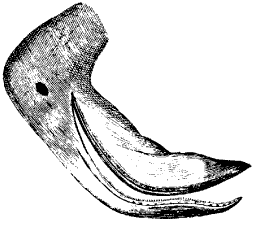 |
Science Frontiers ONLINE No. 39: May-Jun 1985 |
|
|
Upside-down animals
Stephen Jay Gould's recent essay, "The Flamingo's Smile," like all his writing, is thought-provoking. The essay goes far beyond the happy flamingo. It is about unusual adaptations in nature, as illustrated by three inverted or partially inverted creatures.
- The flamingo is a filter-feeder that strains food out of the water with its bill while its head is upside-down. The flaming's bill and tongue are (and must be) radically different from those of other birds to succeed in this strange behavior.
- One type of jellyfish, rather than swimming around with its pulsating bell on top, plunks itself upside-down on the bottom and uses its bell as a suction cup to anchor itself. It then shoots poisonous darts attached to strings of mucous at passing targets and reels them in.
- Some African catfish graze on algae on the undersides of water plants. They swim upside down all the time and display a reversed color scheme, being black on the bottom and light on top.
Gould employs these three examples to argue that changes in animal behavior must have preceded the many changes in form, function, color, etc. that make upside down living profitable. In other words, the proto-flamingos tried feeding with their heads upside down; and it didn't work too well. But "nature" responded with a series of random biological changes, some of which were just what was needed for efficient upside down feeding. In this way, we end up with admirably adapted, inverted flamingos, jellyfish, and catfish.
(Gould, Stephen Jay; "The Flamingo's Smile," Natural History, 94:7, March 1 985.)
Comment. If we were a bit flip above, it is because Gould and most biologists believe that such examples of "perfection" are nicely explained by evolutionary theory. We cannot be so sanguine, for we are still left with too many unanswered questions. Why would animals indulge in such bizarre behavior in the first place? A proto-flamingo experimenting with inverted feeding sans the proper equipment -- huge tongue, fantastic bill, straining devices, etc. -- would not be very efficient and would probably get a snootful of water in the bargain! A half-flamingoized bill would-n't be much better; and a perfect flamingo bill is pretty useless without the pumping and raking action of the special tongue. Can all these changes be orchestrated by random mutations? Finally, are there any fossils of transition stage flamingos? Antievolutionists have been using such arguments for years. The creationist literature is full of them. In reviewing the "answers" proclaimed by both evolutionists and creationists, it seems as if we really deserve some real explanations rather than superficial, philosophically shaped dogmas.
 | Flamingo in feeding position. |